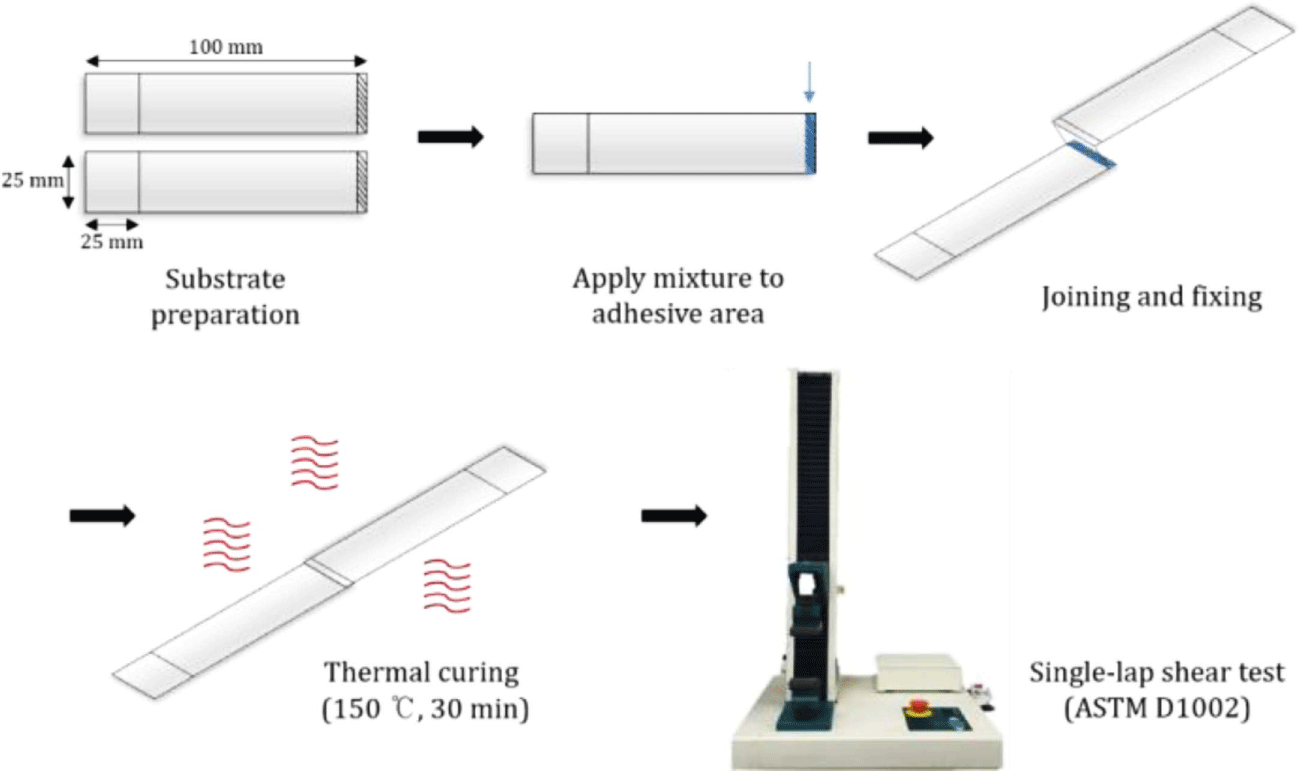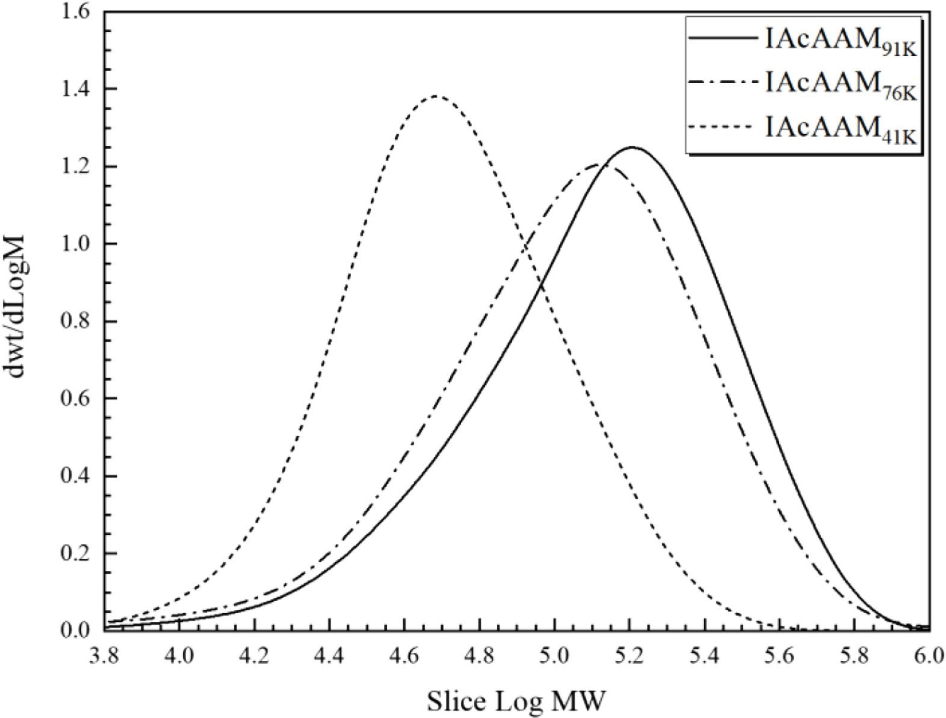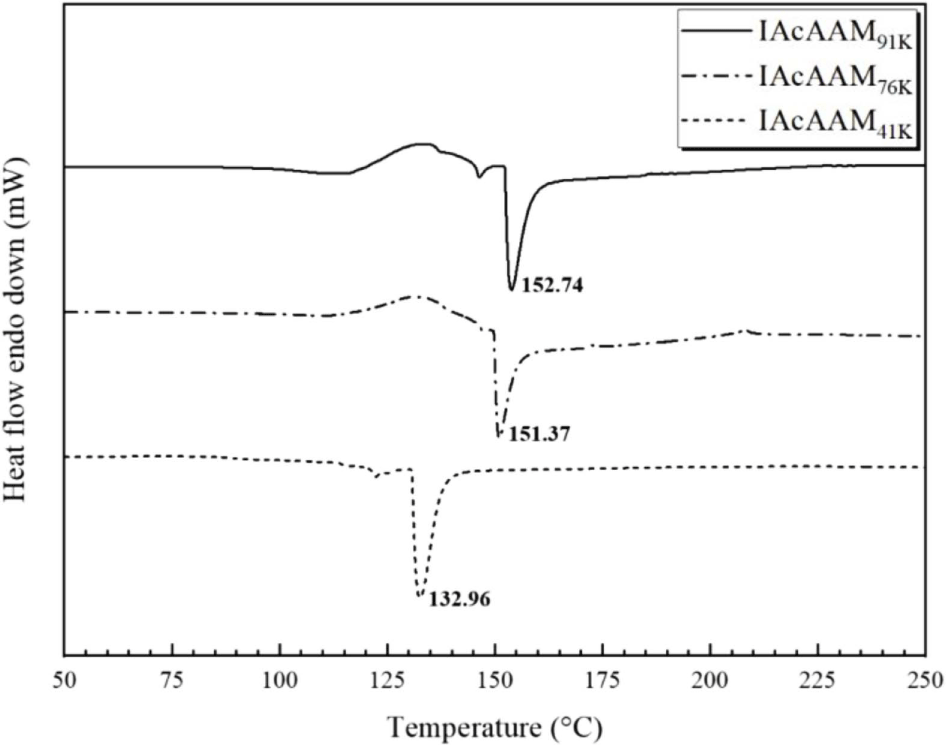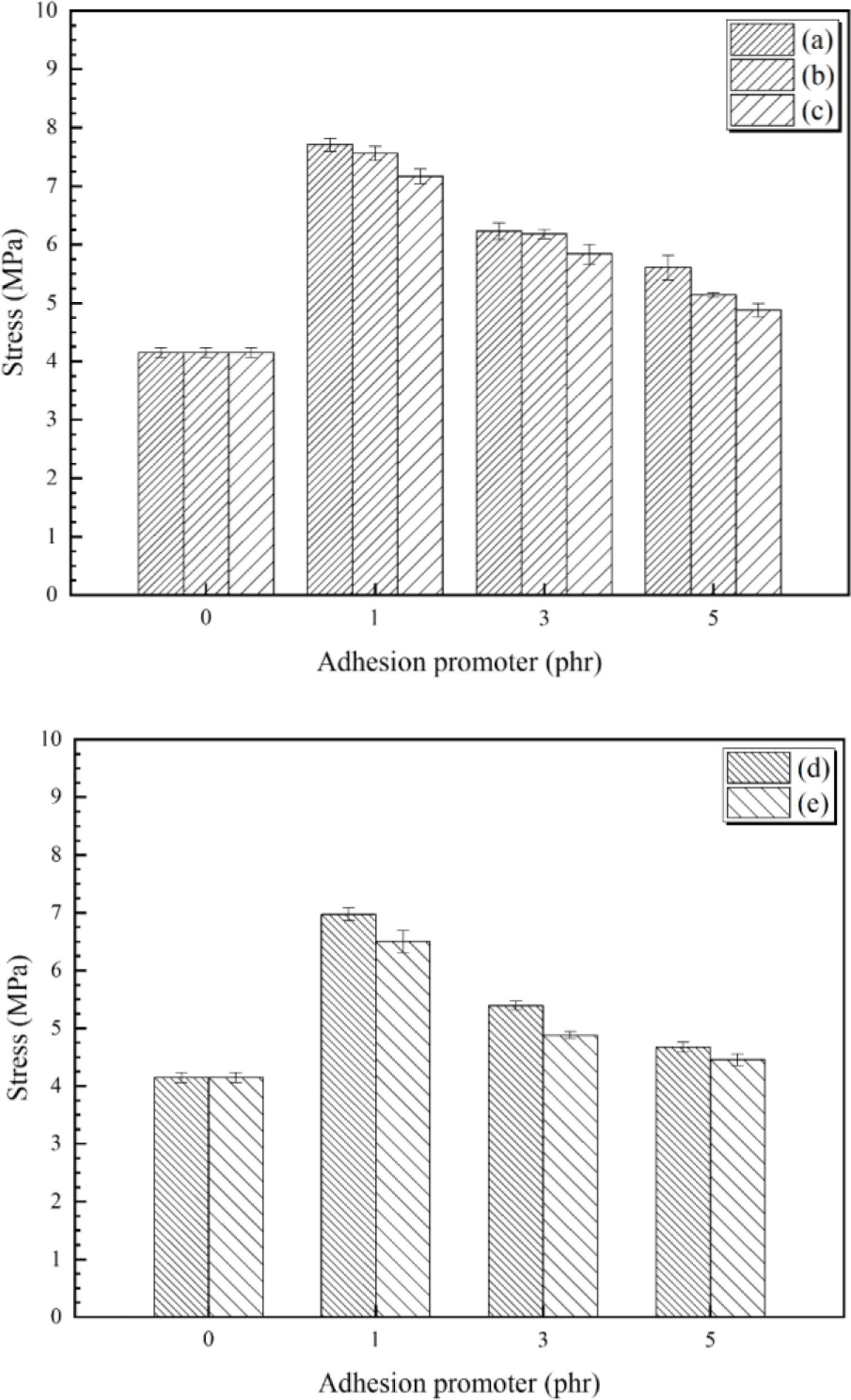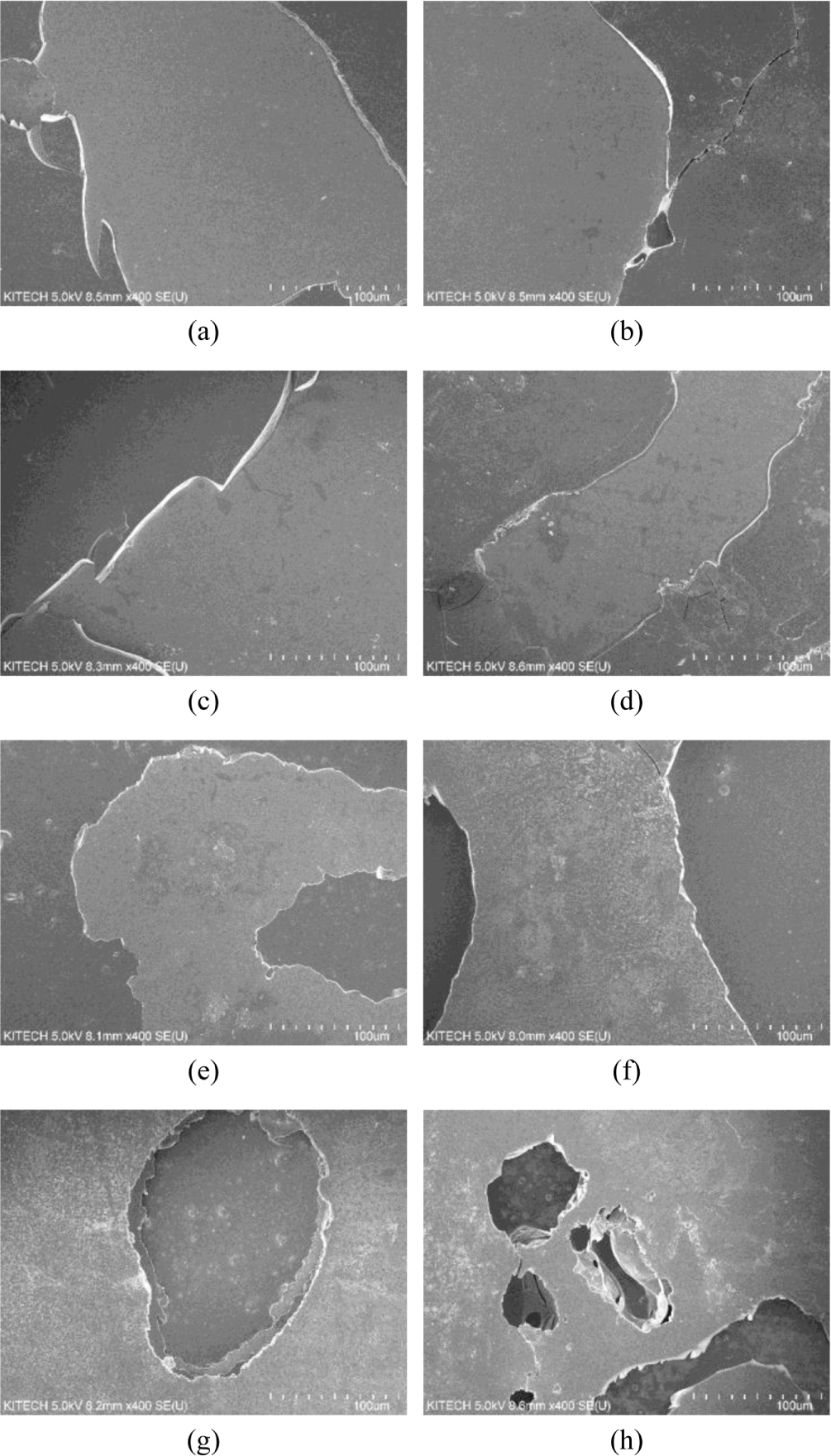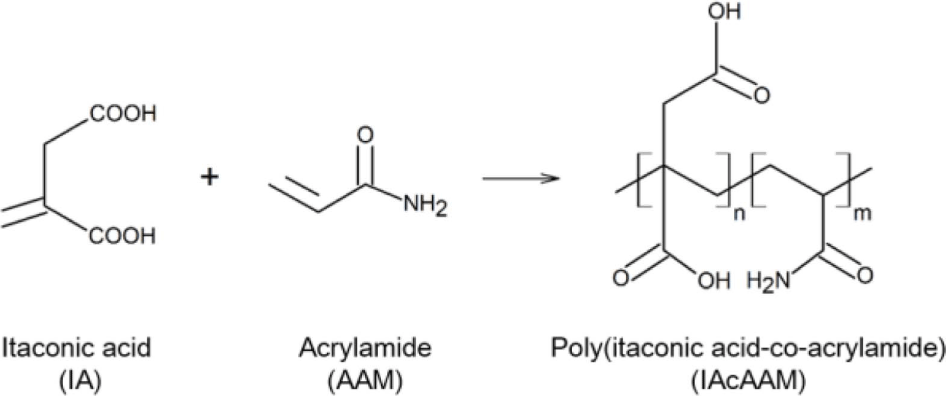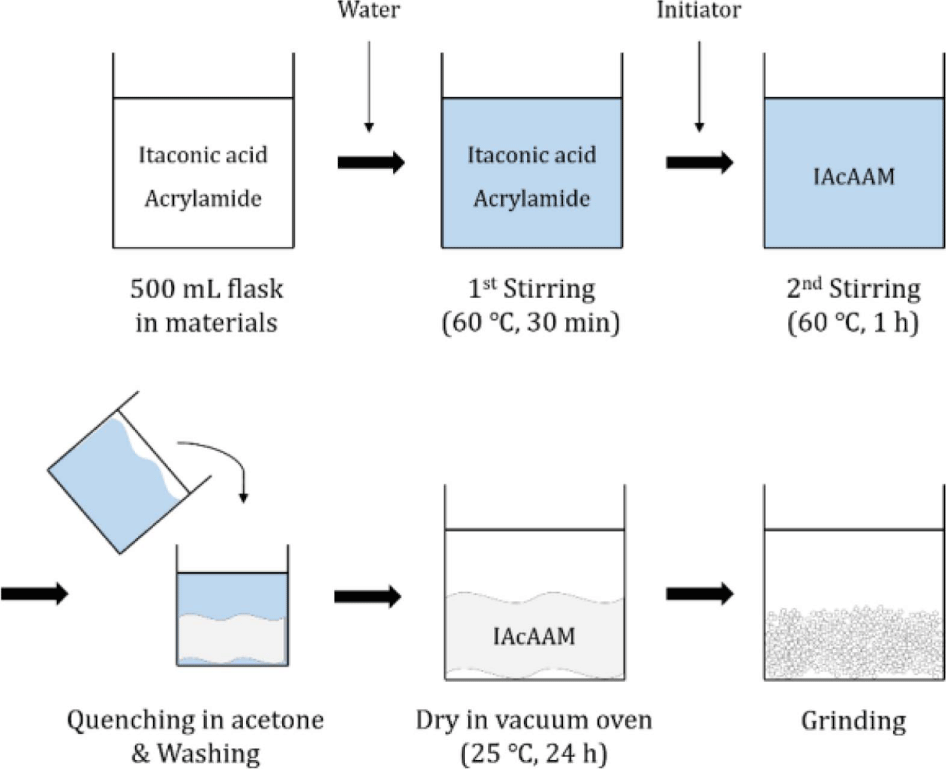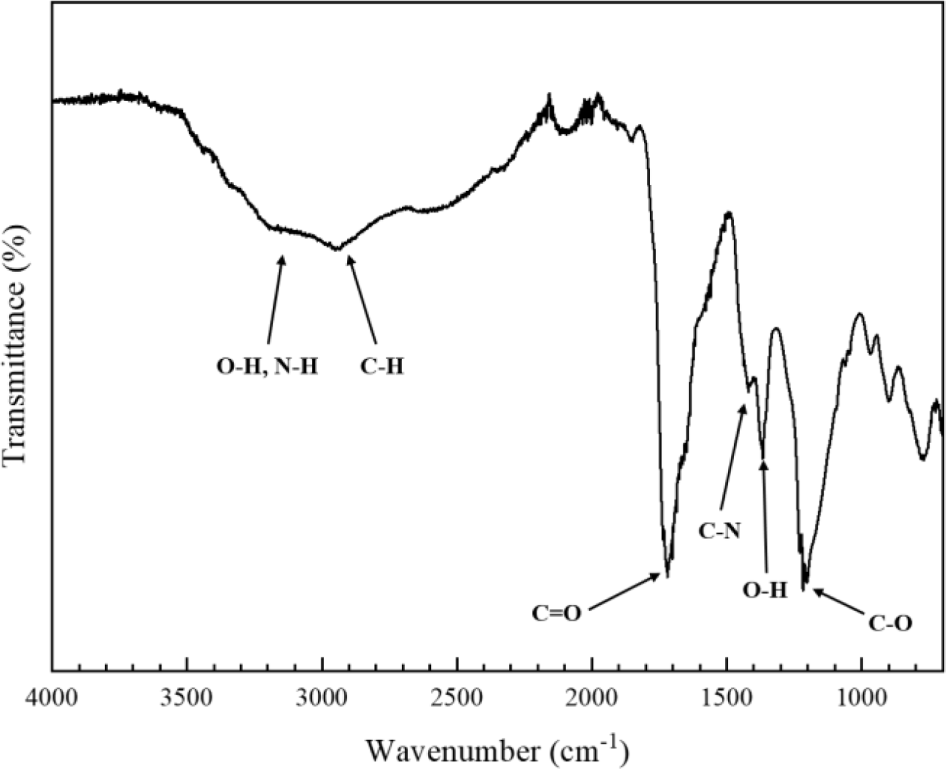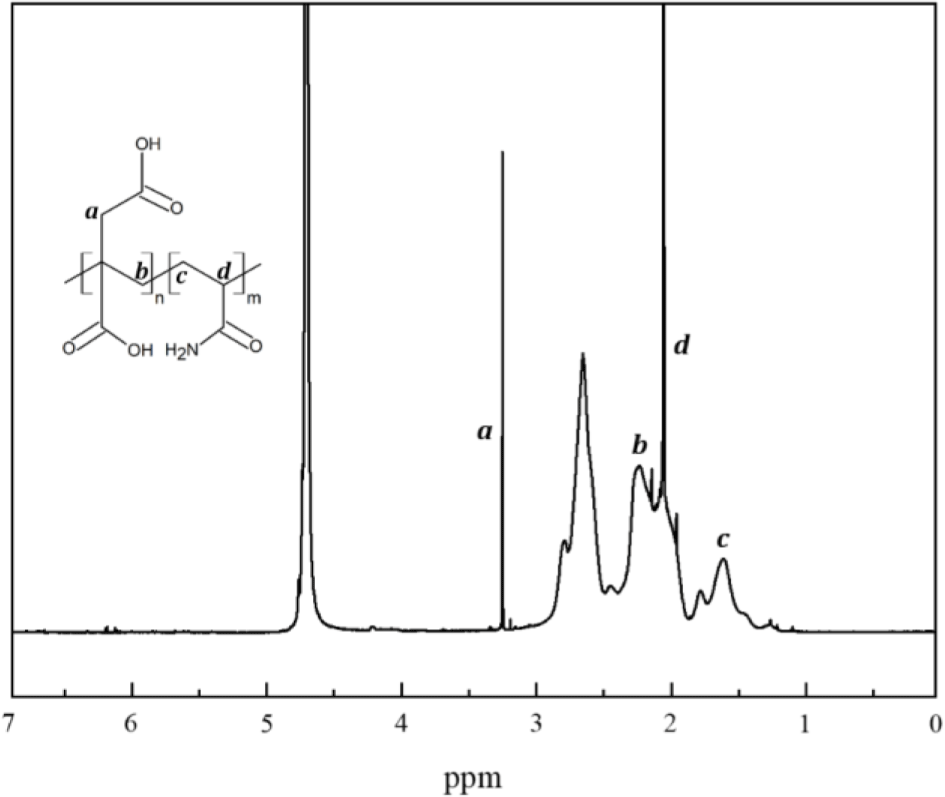Article
Preparation of Adhesion Promoter for Lead Frame Adhesion and Application to Epoxy Composite
Jung Soo Kim*, Eun-jin Kim*,**, Dong Hyun Kim1,†
Author Information & Copyright ▼
*Materials & Component Convergence R&D Department, Korea Institute of Industrial Technology (KITECH), 143, Hanggaul-ro, Sangnok-gu, Ansansi, Gyeonggi-do 15588, Republic of Korea
**Department of Material Chemical Engineering, Hanyang University, 55, Hanggaul-ro, Sangnok-gu, Ansan-si, Gyeonggi-do 15588, Republic of Korea
© Copyright 2022 The Rubber Society of Korea. This is an Open-Access article distributed under the terms of the
Creative Commons Attribution Non-Commercial License (http://creativecommons.org/licenses/by-nc/4.0/) which permits
unrestricted non-commercial use, distribution, and reproduction in any
medium, provided the original work is properly cited.
Received: May 27, 2022; Revised: Jun 22, 2022; Accepted: Jun 27, 2022
Published Online: Jun 30, 2022
Abstract
A polymeric adhesion promoter was synthesized to improve the adhesive strength of the Ni lead frame/epoxy composite. Poly(itaconic acid-co-acrylamide) (IAcAAM) was prepared by copolymerizing itaconic acid and acrylamide. We compared the adhesive strength between the Ni lead frame and epoxy composite according to the molecular weight of IAcAAM. The molecular weight of IAcAAM was controlled using an initiator, which made it possible to use IAcAAM in the epoxy molding compound (EMC) manufacturing process by modulating the melting temperature. The adhesive strength of Ni lead frame/epoxy composite increased with the addition of IAcAAM to the epoxy composite. In addition, as the molecular weight of IAcAAM increased, the adhesive strength of the Ni lead frame/epoxy composite slightly increased. We confirmed that IAcAAM with an appropriate molecular weight can be used in the EMC manufacturing process and increase the adhesive strength of the Ni lead frame/epoxy composite.
Keywords: adhesion promoter; adhesive strength; epoxy composite; Ni lead frame; itaconic ac-id-co-acrylamide
Introduction
에폭시 몰딩 컴파운드(EMC)는 실리카, 에폭시 수지, 페놀 수지, 카본블랙, 난연제 등의 원료로 구성되는 복합소재로 반도체 소자를 외부의 충격, 진동, 수분, 열 등으로부터 보호하기 위해 패키지 몰딩 공정에서 사용된다.1 반도체 소자를 보호하는 EMC의 기본적인 기능 외에 몰딩 시 작업성, 성형성, 신뢰성 등이 요구되며 이러한 특성을 만족시키지 못할 경우 저장 안정성 저하, 성형성 저하, 충진성 저하 등 다양한 문제점이 발생한다.2,3 최근 반도체 분야의 발전과 함께 패키지 설계는 다기능 및 고성능 요구 사항을 가진 고기능성 패키징을 지향하고 있다. 특히 EMC가 적용되는 공정에는 서로 다른 재료 및 부품 사이에 계면이 존재하기 때문에 고유한 특성과 기능이 요구되는데, 이 중 재료 간 접착이나 인터페이스에 대한 접착 기술이 중요하다.4-6
EMC와 리드프레임 사이의 적절한 접착은 소자의 성능 및 신뢰성을 향상시키는 효과적인 방법이다.7,8 EMC의 박리는 패키지의 몰딩 단계에서 발생할 수 있으며 몇 가지의 주요 원인이 있다. 그 중 리드프레임의 표면 불순물은 표면 에너지를 감소시켜 리드프레임에 대한 EMC의 젖음성을 감소시키고, EMC와 리드프레임 간 열적 특성이 불일치하거나, 습기에 대한 친화성 등이 박리에 의한 소자의 신뢰성을 감소시킨다. 이러한 성형 패키지의 문제점을 개선하기 위한 다양한 연구가 진행되어왔다.
금속 리드프레임의 표면을 플라즈마 처리하여 표면 에너지를 개선하거나, 175 °C 이상에서 고온 처리 또는 과산화수소 용액 및 수산화 나트륨 용액을 사용하여 화학적으로 처리하여 표면 거칠기를 수정할 수 있다.9,10 이러한 전처리 방법으로 접착력이 향상될 수 있으나 공정이 비교적 복잡하고 친환경적이지 않다. 또한, 접착증진제와 같은 첨가제를 사용하여 EMC와 리드프레임의 접착강도를 향상시키거나, EMC 구성 변경으로 EMC와 리드프레임의 열 팽창 계수를 일치시키는 방법 등도 연구된 바 있다.11,12 이 중 접착증진제의 도입은 다른 물성에 영향을 미치지 않거나 거의 영향을 미치지 않으면서 EMC의 접착력을 효과적으로 향상시킬 수 있다.
접착증진제 또는 커플링제는 유기 폴리머와 무기 표면 사이의 계면에서 작용하여 두 재료 간의 접착을 향상시키는 물질이다. 아졸계 접착증진제 중 amine 기를 포함하는 3-amino-1,2,4-triazole, carboxyl 기를 포함하는 4,5-imidazole Dicarboxylic acid, thiol 기를 포함하는 3-mercapto-1,2,4-triazole 등을 첨가하여 에폭시 수지와 상호 작용하여 접착력을 향상시킨 연구가 보고된 바 있다.13-16 또한, 블록 공중합체 기반의 첨가제 도입을 통해 에폭시 수지의 접착강도와 내충격성 등의 기계적 물성을 향상시켰으며,17,18 Bates 등은 에폭시와 혼용이 가능한 poly(ethylene glycol) (PEG)와 rubbery한 특성을 지닌 poly(propylene oxide) (PPO)로 구성된 PEG-b-PPO 블록 공중합체를 첨가제로 도입하여, 5 wt% 미만 적용 시 에폭시와 잘 섞이고 에폭시 경화물의 접착력이 향상된다는 연구 결과를 보고한 바 있다.19,20
본 연구에서는 carboxyl기를 포함하는 이타콘산과 amine 기를 포함하는 아크릴 아마이드의 공중합체인 poly(itaconic acid-co-acrylamide) (IAcAAM)를 분자량 별로 합성하여 Ni 리드프레임/에폭시 컴포지트의 신규 고분자 접착증진제로 적용하였다. IAcAAM의 비교 물질로 carboxyl기를 포함하는 benzotriazole-5-carboxylic acid와 amine 기를 포함하는 8-azaadenine 아졸 화합물 2종을 적용하여 Ni 리드프레임/에폭시 컴포지트 접합부의 접착강도를 비교하였다.
Experimental
1. 재료
이타콘산 기반 adhesion promoter 제조를 위해 itaconic acid (IA, Junsei, Japan) 및 acrylamide (AAM, Sigma Aldrich, Korea)를 정제없이 사용하였으며, 공중합체의 분자량 조절을 위해 potassium persulfate (KPS, Sigma Aldrich, Korea)를 개시제로 사용하였다. 접착강도 측정용 샘플 제조를 위해 bisphenol A diglycidyl ether (BADGE, Sigma Aldrich, Korea) 및 ethylenediamine (EDA, Sigma-Aldrich, Korea)과 무기 입자 silica 및 Ni 기판을 사용하였다. 상업용 adhesion promoter로는 8-azaadenine (8-AA, Sigma Aldrich, Korea)과 benzotriazole-5-carboxylic acid (BTAC, Tokyo Chemical Industry, Japan)을 사용하였다.
2. 이타콘산 기반 adhesion promoter 제조
이타콘산 기반 adhesion promoter의 조성은 Table 1에 나타내었다. 기계식 교반기, 질소 주입구, 환류 냉각기, 온도계 등이 장착된 4구 500 ml 반응조에 7:3 몰비의 IA와 AAM을 증류수와 함께 투입하고 60°C에서 1시간 교반하였다. 동일 온도에서 분자량을 조절하기 위해 개시제인 KPS를 각기 다른 양으로 투입하고 1시간 후 반응을 종결하였다. 반응기를 해체하고 공중합체를 아세톤에 담금화하여 미반응 단량체를 제거하였다. 충분한 양의 아세톤으로 세척한 후 응고된 공중합체의 잔여 수분은 25°C 진공오븐에서 24시간 감압하여 제거하였다. 건조가 완료된 후 분쇄기로 곱게 분쇄하였으며, 최종적으로 분자량이 각기 다른 세 가지 유형의 공중합체 IAcAAM을 얻었다.
Table 1.
Formulation of IAcAAM synthesis
| Sample |
IA (mol) |
AAM (mol) |
Water (g) |
KPS (phr) |
| IAcAAM91K |
0.7 |
0.3 |
200 |
1 |
| IAcAAM76K |
3 |
| IAcAAM41K |
5 |
Download Excel Table
3. Ni lead frame/epoxy composite 접착강도 시편 제조
에폭시 단량체 BADGE와 경화제 EDA, 무기 입자 Silica를 10:1:1 중량비로 혼합한 후 3종의 adhesion promoter를 0, 1, 3, 5 phr 투입하였다. 이 혼합물을 접착면에 도포 후 2개의 Ni 기판을 접합 및 고정시켰다. 시편은 100 × 25 × 0.15 mm 크기로 ASTM D1002 규정에 따라 미리 제작하였다. 접합된 시편을 150°C에서 30 min 동안 강제 순환식 건조기에 두고 경화반응을 유도하였다.
Table 2.
Formulation of Ni lead frame/epoxy composite
| BADGE (g) |
EDA (g) |
Silica (g) |
Adhesion promoter (phr) |
| 10 |
1 |
1 |
0 |
| 1 |
| 3 |
| 5 |
Download Excel Table
4. 물성 측정 및 분석
4.1. FT-IR 분석
ATR (attenuated total reflection)방식의 Fourier-transform infrared spectroscopy (Cary 630, Agilent Technologies, USA)을 사용하여 IAcAAM의 화학적 구조를 확인하였다. 해상도는 4 cm-1, 주사 횟수는 64로 4000-600 cm-1의 범위에서 측정하였다.
4.2. 1H NMR 분석
Nuclear magnetic resonance (AVANCEⅢ700, Bruker Corporation, USA) 장비를 통해 IAcAAM의 구조를 분석하였다. 용매는 D2O 용매를 사용하였다.
4.3. 분자량 분석 (GPC)
Gel permeation chromatography (ACQUITY APC System, Waters Corporation, USA)를 사용하여 IAcAAM의 분자량 및 분자량 분포를 측정하였다. 용매는 0.1 M sodium nitrate를 사용하였고, 컬럼은 AQ 450/200/125를 사용하였다.
4.4. 시차주사열량 분석 (DSC)
Differential scanning calorimeter (Q100, TA Instruments, USA)를 사용하여 IAcAAM의 Tm을 측정하였다. 6 mg의 샘플을 질소 분위기 하에 25-400°C 범위에서 4°C/min의 속도로 승온하였다.
4.5. 기계적 물성 분석
Universal Testing Machine (5ST, Tinius Olsen, USA)을 사용하여 ASTM D1002에 따라 접착강도를 측정하였다. Single-lap shear test의 approach speed는 300 mm/min로 상온에서 3회 측정하여 평균값을 얻었다.
4.6. 주사전자현미경 분석 (SEM)
Scanning electronic microscopy (SU-8010, Hitachi, Japan)을 사용하여 접착강도 측정 후 파단된 접착면의 표면 형태를 관찰하였다.
Results and Discussion
1. 구조적 특성
Figure 4에 IAcAAM의 화학적 구조를 나타내었다. IA는 2개의 carboxyl 기를 가지며 AAM은 1개의 amine 기를 가진다. 3000-3500 cm−1 영역에서의 피크는 IA의 hydroxy 기와 AAM의 amine 기가 나타났고,22,23 1700 cm−1 및 1200 cm−1에서의 피크에서는 IA와 AAM의 carboxyl 기와 C=O stretching, C-O stretching이 나타난 것이다.24,25 1400 cm−1 및 1300 cm−1에서의 피크는 각각 AAM의 amine 기 C-N stretching 및 IA의 carboxyl 기 O-H bending에 기인하며,26 C-H stretching은 2900 cm−1에서 나타났다. 1650-1680 cm−1에서 C=C stretching이 나타나지 않은 것으로 합성이 성공적으로 이루어짐을 확인하였다.25
Figure 5에 IAcAAM 의 1H NMR 스펙트럼을 나타내었다. 고분자 주사슬의 CH2는 2.7 ppm에서, IA의 CH2는 2.1-2.2 ppm 및 3.2 ppm에서 나타나고,27,28 AAM의 CH는 2.0 ppm에서, CH2는 1.6 ppm에서 나타난다.29 미반응 단량체인 IA의 CH2 및 AAM의 CH2는 6.1 ppm 및 5.7 ppm에서 나타날 수 있으나, 스펙트럼에 나타나지 않은 것으로 보아 세척 과정에서 모두 제거진 것으로 판단된다. 용매로 사용한 D2O는 4.7 ppm에서 나타난다.
2. 분자량
Table 3, Figure 6에 개시제 함량에 따른 IAcAAM의 평균 분자량 및 분자량 분포를 나타내었다. GPC 곡선에서 모든 공중합체는 단일 피크를 가지며 2개 이상의 분자량 종이 존재하지 않음을 확인하였다. 개시제 함량이 증가함에 따라 평균 분자량이 감소하였다. 중합체는 단량체에 대한 개시제 또는 촉매에 영향을 받는데, 개시제 함량이 높을수록 반응할 수 있는 활성점이 증가하여 보다 저분자량을 가진 중합체가 생성된다.30 따라서 개시제 함량 5 phr에서 평균 분자량이 가장 작으며, 개시제 함량을 변경하여 분자량을 조절할 수 있다.
Table 3.
Molecular weight and Tm for the IAcAAM
| Sample |
Mn |
Mw |
Mz |
PDI |
Tm (°C) |
| IAcAAM91K |
90,978 |
173,374 |
266,678 |
1.906 |
152.74 |
| IAcAAM76K |
76,444 |
149,921 |
253,435 |
1.961 |
151.37 |
| IAcAAM41K |
41,302 |
65,887 |
103,226 |
1.595 |
132.96 |
Download Excel Table
3. DSC
Table 3, Figure 7에 개시제 함량에 따른 IAcAAM의 Tm을 나타내었다. 개시제 함량이 증가함에 따라 152.74°C, 151.37 °C, 132.96°C로 Tm이 감소하였다. 이는 앞단의 평균 분자량 측정 결과와 일치한다. 에폭시 수지의 Tm이 낮으면 고체 분말로 이루어진 EMC 조성물 제조 시 상분리 문제가 발생되고, Tm이 높으면 불용융화 되어 균일한 분산이 어려워진다. 따라서 EMC의 가공 및 성형 온도 등 공정 조건을 설정하는 중요한 기준이 된다.31
4. 접착강도
Figure 8에 3종 adhesion promoter 함량에 따른 접착강도를 나타내었다. IAcAAM를 1 phr 첨가하면 접착강도가 평균 7.48 MPa로 약 80% 향상, 3 phr 첨가하면 평균 6.08 MPa로 약 47% 향상, 5 phr 첨가하면 평균 5.21 MPa로 약 26% 향상하였다. 8-AA을 1 phr 첨가하면 접착강도가 6.97 MPa로 약 68% 향상, 3 phr 첨가하면 5.39 MPa로 약 30% 향상, 5 phr 첨가하면 4.6 MPa로 약 13% 향상하였다. BTAC를 1 phr 첨가하면 접착강도가 6.50 MPa로 약 57% 향상, 3 phr 첨가하면 4.88 MPa로 약 18% 향상, 5 phr 첨가하면 4.46 MPa로 약 7% 향상하였다. 종합적으로 adhesion promoter 투입량 1 phr에서 접착증진 효과가 높게 나타남을 알 수 있다. IAcAAM는 2개의 carboxyl 기 및 amine 기를, 8-AA는 amine 기를, BTAC는 carboxyl 기를 포함한다. carboxyl 의 hydroxy 기와 금속 표면의 hydroxy 기가 수소결합하거나, amine 기와 금속 표면의 hydroxy 기가 수소결합하여 접착강도 향상에 기여할 수 있다.21
Figure 8.
Lap-shear curves for the Ni lead frame/epoxy composite according to adhesion promoter content: (a) IAcAAM91K, (b) IAcAAM76K, (c) IAcAAM41K, (d) 8-AA, and (e) BTAC.
Download Original Figure
IAcAAM의 개시제 함량이 적을수록 평균 분자량이 증가하여 IAcAAM91K을 첨가하였을 때 경화물의 강도가 IAcAAM76K 및 IAcAAM41K을 첨가하였을 때 보다 향상되어 접착강도가 향상되었다.16 다만 IAcAAM 함량을 3 phr 이상 첨가하면 접착강도가 감소하는 추세를 보이며, 이는 접착면에 잔존하는 IAcAAM의 입자로 인해 기판 간 부착력이 감소하거나, 실리카 입자의 응집으로 인해 접착력이 저하된 것으로 예측한다.
5. SEM
Figure 9에 접착강도 측정 후 시편의 파단면을 나타내었다. 파단면을 관찰하여 접착면의 파괴거동을 파악할 수 있다. 모든 샘플의 경우 접합계면 한쪽에 접착제가 얇게 남아있는 접착 계면 근처 파괴(near adhesive failure) 거동과 피착재와 접착제가 접착면에서 완전히 분리되어 매끈한 파단면을 가지는 접착 계면 파괴(adhesive failure) 거동을 혼합적으로 보였다. 피착재 양측에 접착제가 남아있는 혼합 파괴(mixed mode failure) 거동에서 접착부가 남아있는 면적이 많을수록 수록 접착강도가 증가할 수 있다.32,33
Figure 9.
SEM images of the Ni lead frame/epoxy composite fracture surfaces: (a) Control, (b) IAcAAM91K_1 phr, (c) 8-AA_1 phr, (d) BTAC_1 phr, (e) IAcAAM76K_1 phr, (f) IAcAAM41K_1 phr, (g) IAcAAM41K_3 phr, and (h) IAcAAM41K_5 phr.
Download Original Figure
IAcAAM41K을 3 phr 및 5 phr 첨가한 샘플을 제외한 모든 샘플의 경우 접착제가 단일층으로 분리되었다. IAcAAM41K을 3 phr 및 5 phr 첨가한 샘플의 접착제가 다층으로 분리된 이유는 IAcAAM91K 및 IAcAAM76K보다 평균 분자량이 낮아 경화물의 강도가 저하되었거나, 실리카의 응집으로 인해 외부 응력이 발생하였을 때 효과적으로 힘을 흡수 및 분산시키지 못하였기 때문이다.16 이는 접착강도 실험 결과에서 IAcAAM41K을 3 phr 이상 첨가 시 접착강도가 감소하는 추세를 보인 것과 일치한다.
Conclusions
본 연구에서는 IA와 AAM의 공중합체인 IAcAAM를 개시제 함량별로 합성하여 Ni 리드프레임/에폭시 컴포지트의 신규 고분자 접착증진제로 적용하였다. 개시제 함량을 변경하여 분자량 및 Tm을 조절하였으며 이는 에폭시 컴포지트의 사용 온도 및 공정 조건에 따른 적용성을 확대할 수 있다. FT-IR 및 NMR 분석을 통해 IAcAAM의 화학적 구조를 분석하였는데, IA와 AAM의 C=C 이중결합 피크가 나타나지 않은 것으로 합성이 성공적으로 이루어짐을 확인하였다. GPC 결과에서는 개시제 함량이 증가함에 따라 평균 분자량이 감소하였고, DSC 분석 결과에서는 개시제 함량이 증가함에 따라 Tm이 감소하였다. 접착강도 측정 및 파단면 분석 결과, IAcAAM의 함량 1-3 phr 에서 접착강도가 향상되었으며, 이는 IAcAAM의 carboxyl 기와 amine 기가 금속 표면의 hydroxyl 기가 수소결합하여 접착강도 향상에 영향을 미친 것으로 판단하였다.
Acknowledgements
본 연구는 산업통상자원부 산하 한국산업기술평가관리원이 연구 지원한 소재부품기술개발사업(20014546, 20004044)의 일환으로 수행되었기에 감사드립니다.
References
J. Zeng, R. Fu, Y. Shen, H. He, and X. Song, “High thermal conductive epoxy molding compound with thermal conductive pathway”,
J. Appl. Polym. Sci.,
113, 2117 (2009).


N. Srikanth, L. Chan, amd C. J. Vath, “Adhesion improvement of EMC–leadframe interface using brown oxide promoters”,
Thin Solid Films,
504, 397 (2006).


L. Duo, Z. Zhang, K. Zheng, D. Wang, C. Xu, and Y. Xia, “Perhydropolysilazane derived SiON interfacial layer for Cu/epoxy molding compound composite”,
Surf. Coat. Technol.,
391, 125703 (2020).


R. Furuno, Y. Takatuji, K. Kubo, and T. Haruyama, “Improvement of the adhesive strength of the leadframe and epoxy resin by forming organic molecules–metal composite interface”,
Electron. Commun. Jpn.,
100, 67 (2017).


M. Kitano, A. Nishimura, S. Kawai, and K. Nishi, “Analysis of package cracking during reflow soldering process”,
26th Annual Proceedings Reliability Physics Symposium 1988, 90 (1988).


M. Lebbai, J. K. Kim, and M. M. F. Yuen, “Effects of moisture and elevated temperature on reliability of interfacial adhesion in plastic packages”,
J. Electron. Mater,
32, 574 (2003).


J. H. Roh, J. H. Lee, N. I. Kim, H. M. Kang, T. H. Yoon, and K. H. Song, “DSC analysis of epoxy molding compound with plasma polymer–coated silica fillers”,
J. Appl. Polym. Sci.,
90, 2508 (2003).


S. C. T. Kwok, and M. M. F. Yuen, “Potential-assisted assembly of thiol-based materials for reliable copper-epoxy interface”,
2012 14th International Conference on Electronic Materials and Packaging, 1 (2012).

H. Lin, and G. S. Frankel, “Atmospheric corrosion of Cu by UV, ozone and NaCl”,
Corros. Eng. Sci. Technol.,
48, 461 (2013).


S. C. Chao, W. C. Huang, J. H. Liu, J. M. Song, P. Y. Shen, C. L Huang, L. T. Hung, and C. H. Chang, “Oxidation characteristics of commercial copper-based lead frame surface and the bonding with epoxy molding compounds”,
Microelectron. Reliab.,
99, 161 (2019).


S. M. Song, K. Cho, C. E. Park, H. K. Yun, and S. Y. Oh, “Synthesis and characterization of water‐soluble polymeric adhesion promoter for epoxy resin/copper joints”,
J. Appl. Polym. Sci.,
85, 2202 (2002).


S. Luo, and C. P. Wong, “Effect of UV/ozone treatment on surface tension and adhesion in electronic packaging”,
IEEE Transactions on Components and Packaging Technologies,
24, 43 (2001).


J. Ding, C. Chen, and G. Xue, “The dynamic mechanical analysis of epoxy–copper powder composites using azole compounds as coupling agents”,
J. Appl. Polym. Sci.,
42, 1459 (1991).


N. Gladkikh, Y. Makarychev, M. Petrunin, M. Maleeva, L. Maksaeva, and A. Marshakov, “Synergistic effect of silanes and azole for enhanced corrosion protection of carbon steel by polymeric coatings”,
Prog. Org. Coat.,
138, 105386 (2020).


S. M. Song, C. E. Park, H. K. Yun, C. S Hwang, S. Y. Oh, and J. M. Park, “Adhesion improvement of epoxy resin/copper lead frame joints by azole compounds”,
J. Adhes. Sci. Technol.,
12, 541 (1998).


J. Moon, Y. Huh, Y. Choe, and J. Bang, “Core-shell copolymer as highly effective additive for epoxy adhesives”,
Polymer(Korea),
45, 757 (2021).


V. Pang, Z. J. Thompson, G. D. Joly, F. S. Bates, and L. F. Francis, “Adhesion strength of block copolymer toughened epoxy on aluminum”,
ACS Appl. Polym. Mater.,
2, 464 (2019).


J. M. Dean, N. E. Verghese, H. Q. Pham, and F. S. Bates, “Nanostructure toughened epoxy resins”,
Macromolecules,
36, 9267 (2003).


C. Declet-Perez, E. M. Redline, L. F. Francis, and F. S. Bates, “Role of localized network damage in block copolymer toughened epoxies”,
ACS Macro Lett.,
1, 338 (2012).



Y. S. Thio, J. Wu, and F. S. Bates, “Epoxy toughening using low molecular weight poly(hexylene oxide)-poly(ethylene oxide) diblock copolymers”,
Macromolecules,
39, 7187 (2006).


L. S. Son, H. N. Lee, and H. K. Lee, “Effect of Alkali Surface Modification on Adhesion Strength between Electroless-Plated Cu and Polyimide Films”,
J. Surf. Sci. Eng,
45, 8 (2012).


G. Sharma, A. Kumar, M. Naushad, B. Thakur, D. V. N. Vo, B. Gao, A. A. Al-Kahtani, and F. J. Stadler, “Adsorption-al-photocatalytic removal of fast sulphon black dye by using chitin-cl-poly(itaconic acid-co-acrylamide)/zirconium tungstate nanocomposite hydrogel”,
J. Hazard. Mater. Lett.,
416, 125714 (2021).



S. N. A. M. Jamil, M. Khairuddin, and R. Daik, “Preparation of acrylonitrile/acrylamide copolymer beads via a redox method and their adsorption properties after chemical modification”,
e-Polymers,
15, 45 (2015).


S. Dan, S. Banivaheb, and H. Hashemipour, “Synthesis, characterization and absorption study of chi-tosan-g-poly(acrylamide-co-itaconic acid) hydrogel”,
Polym. Bull.,
78, 1887 (2021).


M. D. Olawale, J. A. Obaleye, and E. O. Oladele, “Itaconic acid based coordination polymer: mechanochemical synthesis, characterization and vapochromic study”,
Niger. J. Chem. Res.,
8, 280 (2020).

C. Erbil, and N. Uyanık, “Interactions between poly(acrylamide)–poly(itaconic acid) and cerium (IV)–nitrilotriacetic acid redox pair in the synthesis of acrylamide and itaconic acid homo‐and copolymers”,
Polym. Int.,
50, 792 (2001).


Y. Aso, M. Sano, R. Yada, T. Tanaka, T. Aoki, H. Ohara, T. Kusukawa, K. Matsumoto, and K. Wada, “Biobased poly (itaconic acid-co-10-hydroxyhexylitaconic acid) s: synthesis and thermal characterization”,
Materials,
13, 2707 (2020).




S. Zhang, Y. Dang, X. Ni, C. Yuan, H. Chen, and A. Ju, “Preparation and stabilization of high molecular weight poly(acrylonitrile-co-2-methylenesuccinamic acid) for carbon fiber precursor”,
Polymers,
13, 3862 (2021).




Z. Abdollahi, and V. G. Gomes, “Synthesis and characterization of polyacrylamide with controlled molar weight,
The University of Sydney NSW, Australia, 1 (2006).

J. H. Yim, D. H. Kim, and Y. S. Ko, “Ring-opening polymerization of L-lactide with glycidol as initiator”,
Polymer (Korea),
37, 606 (2013).


Y. C. Kim, O. J. Cha, and K. M. Kim, “Study on self-extinguishing epoxy resin composition”,
J. Adhes. Interface,
11, 168 (2010).

M. S. Kim, H. Y. Kim, S. H. Yoo, J. H. Kim, and J. K. Kim, “Effect of curing agent on the curing behavior and joint strength of epoxy adhesive”,
J. KWJS,
29, 54 (2011).


J. K. Lim, “Tensile, bending and shear strength distributions of adhesive-bonded butt joint specimens”,
Compos. Sci. Technol.,
65, 1421 (2005).


